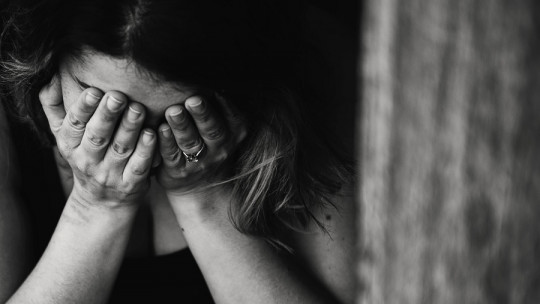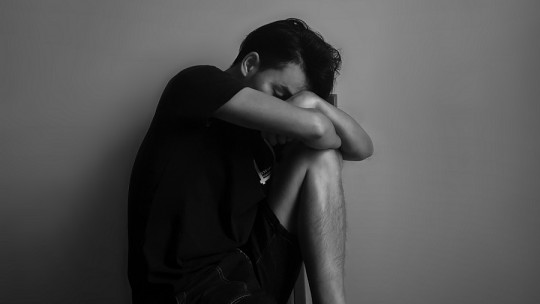
Shame is a tremendously common feeling. All human beings experience it to a greater or lesser extent.
But it is not as simple a phenomenon as it may seem, since it can have very different expressions depending on the situation or the person. For this reason, we will dedicate this article to delve deeper into this issue to know more about the types of shame and its implications.
What does the feeling of shame consist of?
Before launching into listing the different types of shame, we must first understand better what this emotion consists of. Shame is a feeling of a negative nature (in that it is not pleasant for the person who suffers from it) that is generated as a result of an unfavorable evaluation that the person is making about themselves as a result of a certain situation.
Shame generally arises as a consequence of a conscious interpretation of the events experienced in which the individual perceives that he has breached his honor through reprehensible behavior Later we will explore the various types of shame that exist and we will realize that this lack does not necessarily have to occur, since self-perception is a key phenomenon in this matter.
Shame has historically been related to the concept of ignominy, which means a very serious offense and whose etymology, coming from Latin, refers to the loss of one’s name, a very graphic description of the consequences that a negative act has on the honor of one. the person who carries it out.
When a person feels shame, a series of negative reactions and thoughts are generated, which imply loss of self-confidence, loss of self-esteem, feelings of uselessness, helplessness and loss of confidence. Likewise, he feels exposed to others, since generally it is the reaction of his neighbor that triggers some types of shame.
The person who is experiencing this emotion therefore feels great anguish, for all these reasons. Charles Darwin himself already pointed out in his works some of the physiological reactions of this emotion For example, he pointed out blushing, one of the hallmarks of shame, which consists of a process of vasodilation in the subject’s face that causes a very characteristic coloration externally.
In fact, knowing that the person is physically expressing shame and is being visible to others can cause the feeling of shame to increase, paradoxically, causing both sensations to feed off each other. Other physical characteristics that occur in the different types of shame and that Darwin described are pointing the eyes and head downwards, relaxing the body posture, and feeling embarrassed.
But later an attempt was made to record exactly the symptoms that accompanied the feeling of shame. Some points agreed with Darwin’s, others disagreed, and others added information. The so-called code of shame states that this feeling entails tension in both the body and the muscles of the face The person usually remains still and feels internal turmoil.
Likewise, you will feel nervous and therefore an avoidant attitude towards the rest of the people present will begin. It is possible that his tone of voice may also be affected, denoting nervousness in his words, or he may choose silence.
Although many of these characteristics coincide with shyness, it is important not to confuse the two issues, as they are different elements. Shyness is a trait of some people, while shame is a state that anyone can experience at any given moment under a series of circumstances that we will see later.
What are the types of shame?
After a first part dedicated to specifying what this feeling consists of, we can now move on to the different types of shame, in order to know the peculiarities and differences between one and the other.
1. Pure shame
The purest form of shame is the one we have been developing since the beginning of the article. Is that which It is triggered by a grievance towards another person and triggers the perception of dishonor in the person who caused it, and therefore, shame. Of all the types of shame, this is the most general, being a sensation that all people have experienced to a greater or lesser extent on some occasion.
2. False shame
The next in the types of shame may be surprising. This is the expression of false shame, which is given by a situation in which The person, in reality, has not committed the affront of which he is accused, so he is being unfairly disapproved However, he experiences the feeling of shame, being equally accused.
You may even doubt your behavior and think that the sentence to which you are being subjected actually corresponds.
3. Shame of shame
Another type of shame is precisely a form of meta shame. What does it consist of? This typology appears when the person has experienced said emotion, for example, by being aware of the wrong that he has committed against another person and therefore begins to feel the sensations that accompany it. That is the trigger of the so-called secret shame, which is the shame of being embarrassed
When feeling this type of shame, it is common for affected people to try to hide the symptoms, because that is precisely what is triggering this second phase of shame.
4. Toxic shame
In the types of shame we also find a very specific modality that occurs under really extreme conditions. It’s about toxic shame, and it’s a reaction suffered by some children who, unfortunately, have been victims of sexual abuse
These people usually suffer from a dissociation when it comes to managing this shame, which causes it to remain encapsulated until the subject has the necessary resources to confront it.
Note that in this type of shame, the person who suffers it is by no means the one who has committed the affront, but quite the opposite. She is a doubly victim, firstly because of the abuse she suffered and secondly because of the guilt and shame experienced by them, for which she had no responsibility.
5. Shame of others
The last of the types of shame that we can list is none other than vicarious shame, popularly known as other people’s shame. This is an indirect way of experiencing shame, since The person who is experiencing this typology is not the one who committed the infraction nor the one who has been affected but rather she is a spectator of said scene.
In this way, the individual who feels vicarious shame is empathizing with the person who feels genuine shame, and therefore shares, to some extent, some of the symptoms of this emotion with the offender. Sometimes, it may even be the case that the person who feels the shame of others is experiencing it in a more intense way than the other subject.
Shame as social stigma
We have compiled the different types of shame that are known. Now we will stop to do a quick analysis of the importance that shame has historically had in societies as a stigma, sometimes with serious repercussions for those who have suffered from it.
At different times and places the so-called badge of shame has been used, a badge with which the person who was experiencing this situation could be publicly identified so that everyone, even if they were oblivious to the affront, could make fun of said individual in a sometimes truly cruel act.
This mark, which could sometimes consist of a specific piece of clothing, a badge, a hat or even a physical mark, It was the indication by which the person should be ashamed of their actions and would be chased by them. They were usually also ostracized, ceasing all types of social relationships, because the rest of the people did not want to be seen interacting with a marked person.
In some cases the symbol even consisted of depriving the subject of his shoes, making him walk barefoot or even naked, to atone for his guilt. You could also get a tattoo or even a mark with fire, so that it would be marked for life.
Without a doubt, this phenomenon represents one of the most humiliating forms of expression for those people who are experiencing one of the types of shame that we have learned about throughout these paragraphs.








